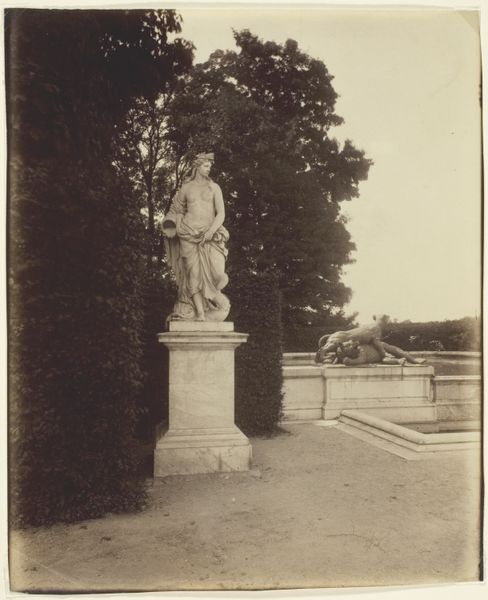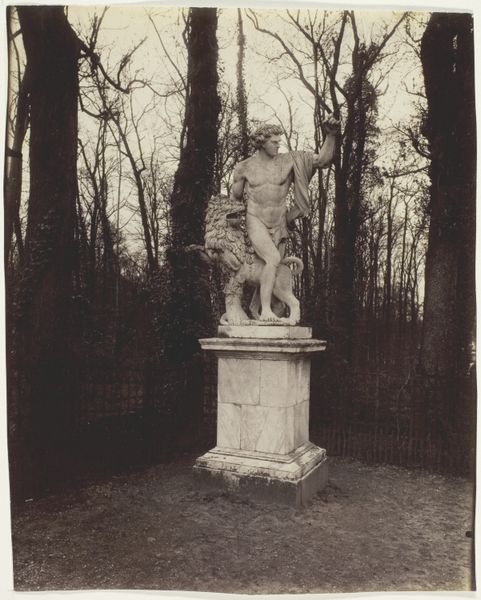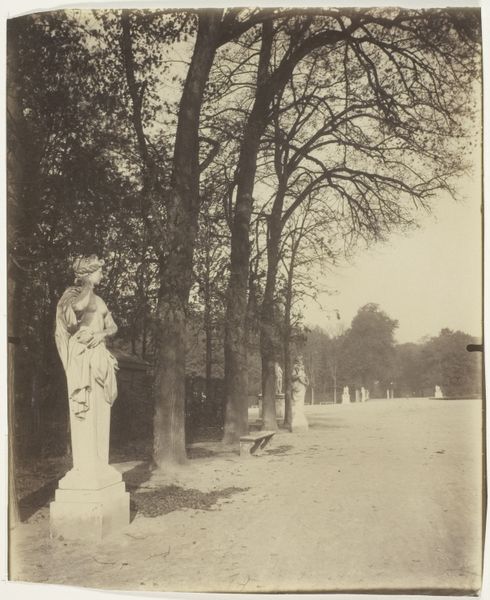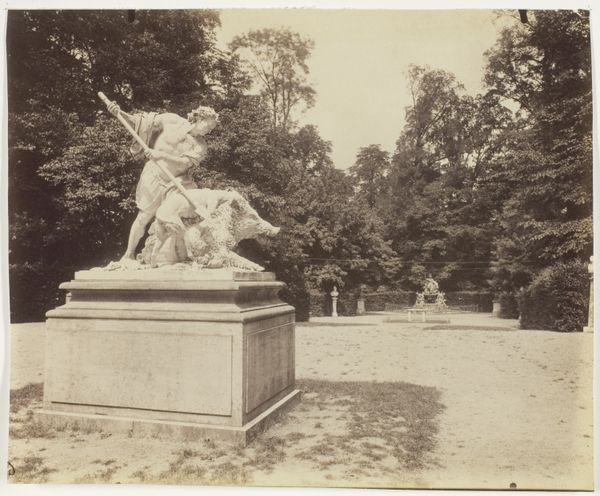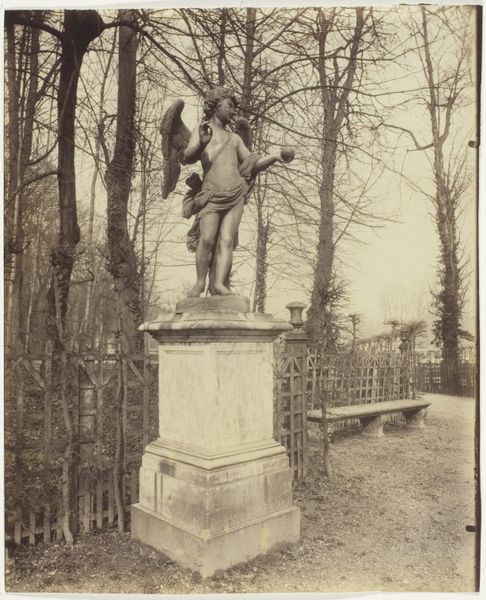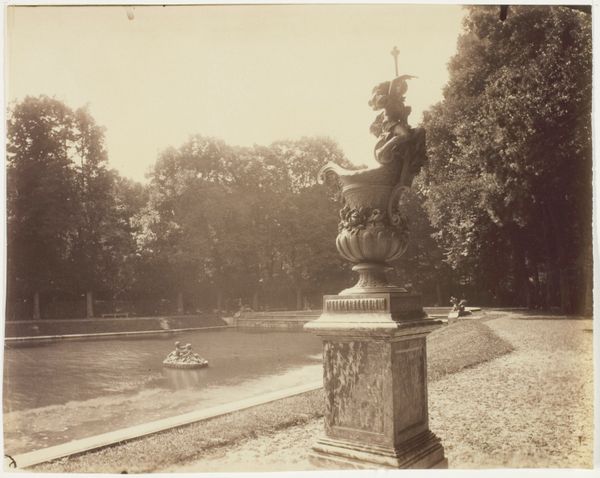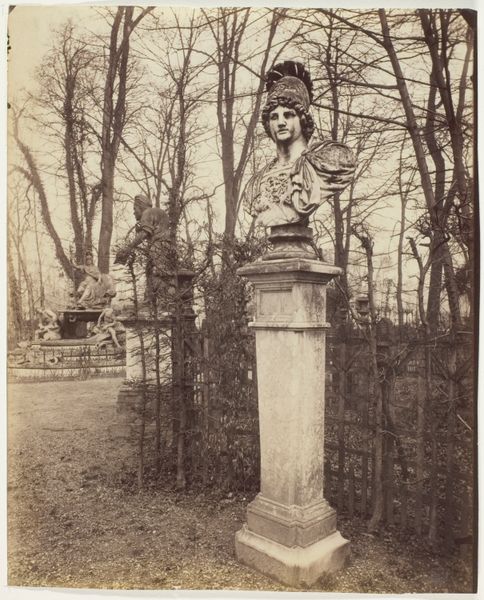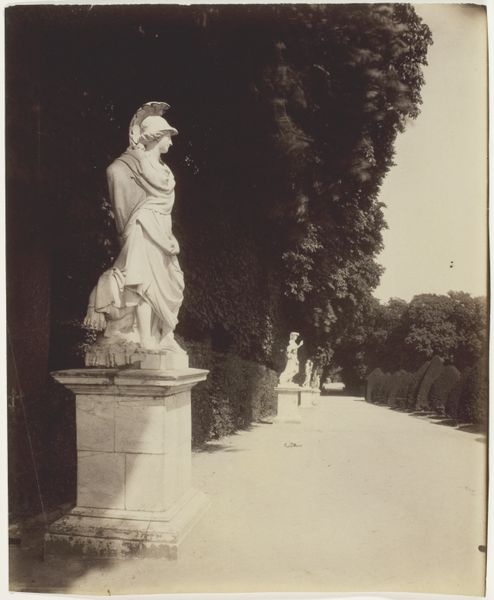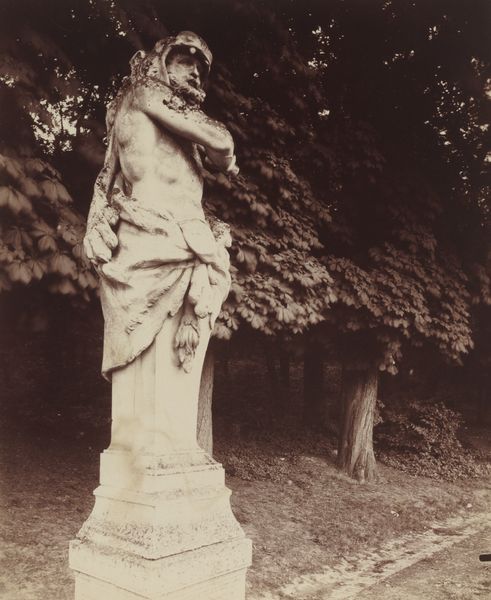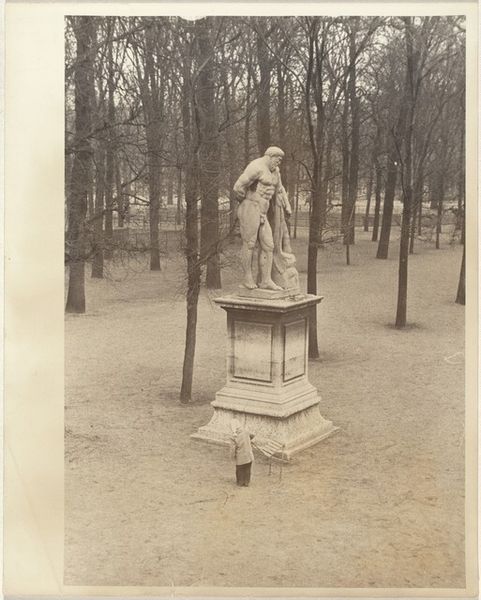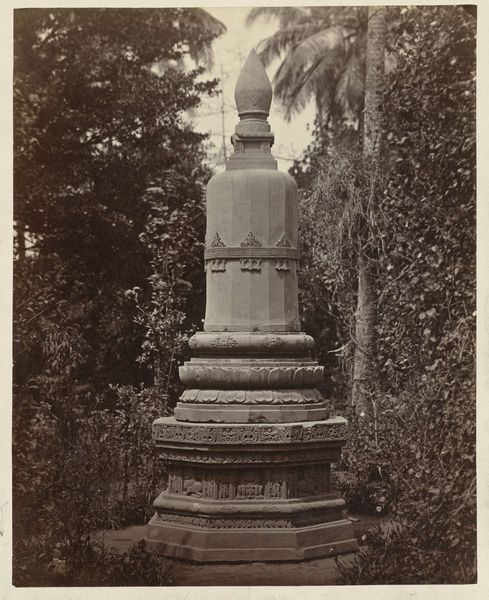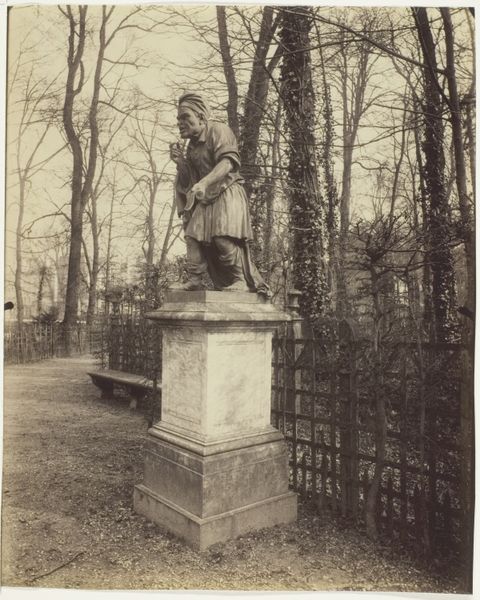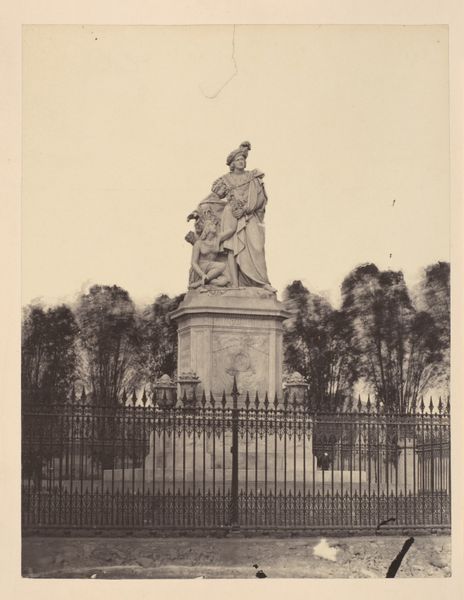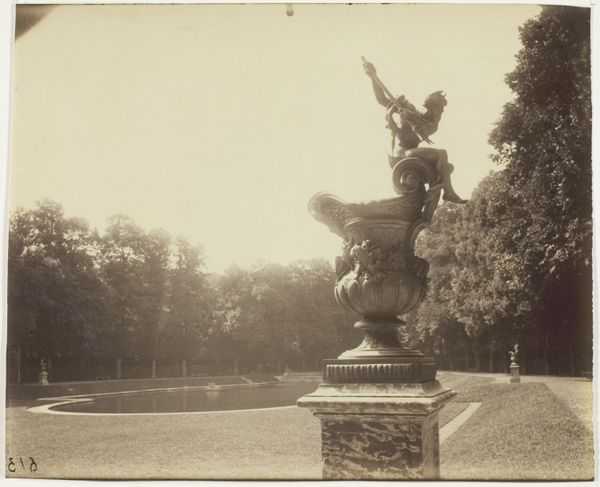
Dimensions: 22.1 × 17.6 cm (image); 22.1 × 18 cm (paper)
Copyright: Public Domain
Curator: This is Eugène Atget's "Versailles, Coin de Parc," captured in 1904. Atget documented pre-Haussmann Paris and its surrounding areas; this print offers a glimpse into the formal gardens of Versailles. Editor: My first impression is one of restrained elegance. The sepia tone evokes a sense of nostalgia, but the crisp lines of the sculpture and hedges suggest control, even order. There's something both timeless and slightly melancholic about it. Curator: I think you've hit on something key. Atget was working during a time of significant social upheaval in France. He seemingly chose to turn away from documenting industrialization or class struggles and instead focuses on aspects of French culture that could be read as emblems of power or national identity at that historical moment. Versailles itself symbolizes absolutist monarchy, a past irrevocably lost. Editor: Exactly. Look at how the sculptor's gaze—or the allegorical statue that stands there, gazing out—is fixed beyond the frame, as if yearning for something lost. The very setting, the corner of a park, implies a boundary, a containment. The figures also look somewhat cropped, and the overall composition, despite the obvious artifice of the sculpted hedge rows, has a strange off-the-cuff snapshot feeling as well. Curator: The very medium of photography democratizes the image somewhat. The ruling classes were probably among the very few people who would have been allowed inside the park. This gives rise to several important questions: is Atget trying to take Versailles from its owners and give it to the masses? Was this part of a class struggle in disguise? What is the relationship between space and power? Editor: Or could it be read as the park having long ago passed from the height of fashion? In any case, the photographic image brings Versailles down to our level and even captures some amount of physical deterioration. To that end, it should be remembered that such statues derive much of their emotional power from their repeated reuse over millennia. They accumulate history even as the political meanings of the statue shift. They are always standing in for an absence. Curator: Precisely. This photograph presents viewers with an incredibly rich intersection between space, class, representation, and history. Editor: I leave with the powerful impression of enduring motifs captured at the crux of historical transition, prompting one to ponder on cultural values. Curator: An important photograph, forcing a new understanding of cultural preservation at a time when societal landscapes were dramatically changing.
Comments
No comments
Be the first to comment and join the conversation on the ultimate creative platform.
